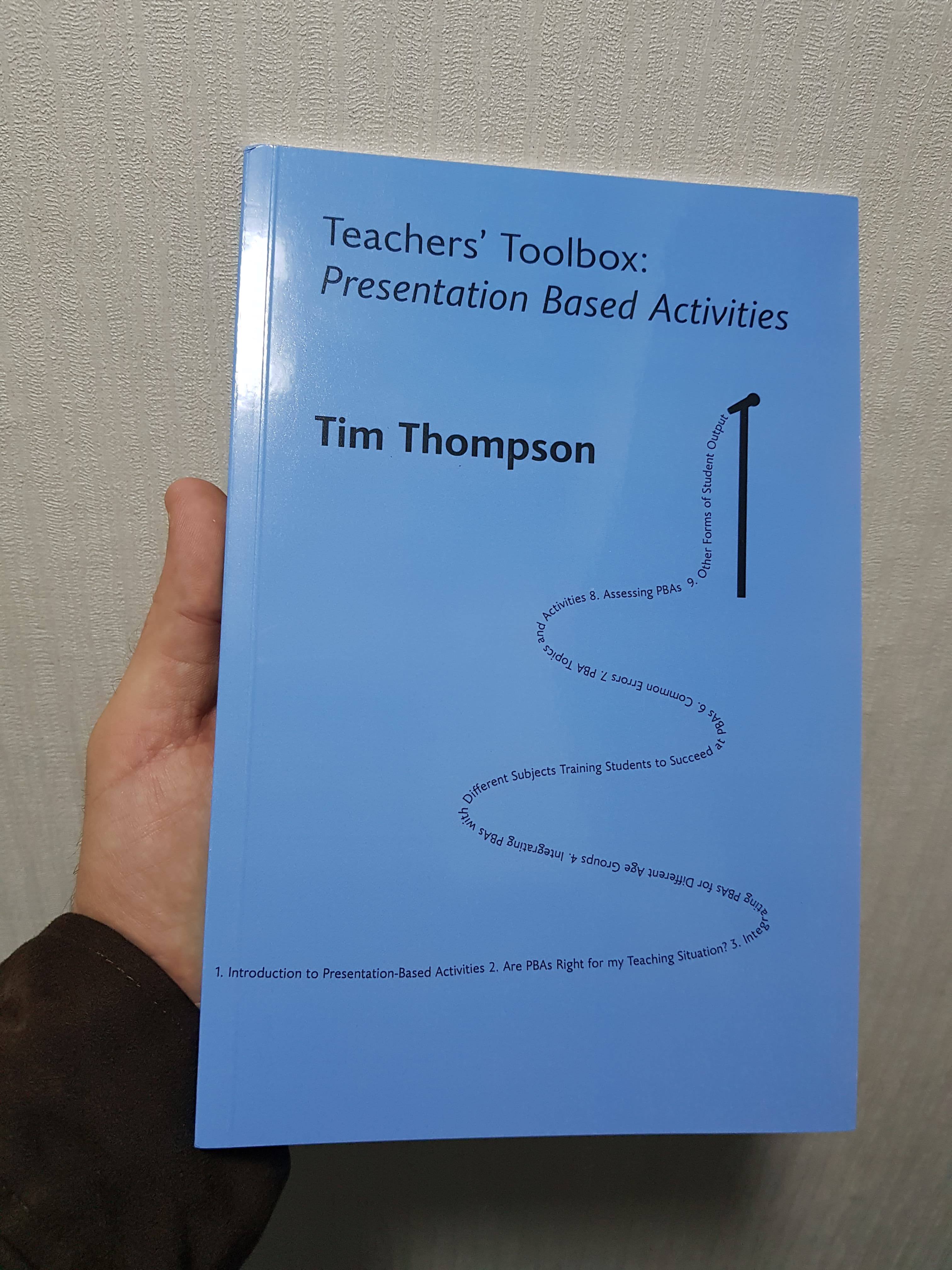 Adventures in Podcasting
Adventures in Podcasting
Timothy Hampson
I decided to start my podcast, ELT WTF (the WTF, naturally, stands for ‘What Tim Feels’) while listening to the TEFLology podcast. In the past I had blogged, but I was never sure that I had much of interest to say. On the other hand, I am always full of questions that I want to ask people. Starting an interview-based podcast was a solution to both those problems; I wouldn’t have to come up with things to say each week, just a list of questions. Besides, the TEFLology crew seemed to be having a good time and their episodes were really interesting. I wanted to be having similar conversations.
Getting started
I had the idea to start a podcast at around eight pm one evening and by nine I had ordered an all in one recorder and sent some emails asking people to be guests on the show. One reason for starting the pod was wanting an opportunity (or perhaps an excuse) to have more conversations about English language teaching. Another was a desire to scratch that creative itch that many teachers have. I was also interested in having a chance to give a platform to people and causes I believe in.
One thing that is certain is that podcasting can open doors. I can’t imagine emailing someone to say “Hi this is Tim Hampson, a teacher without much experience. Fancy a chat about teaching?” However, an email asking someone to appear on a podcast is certainly doable. I feel really lucky to have been able to talk to, and even meet, some of my TEFL heroes and even more lucky to get to ask them exactly the questions I wanted to without having to share their attention with anyone else.
My favourite podcasts so far are ones where I’ve honed in on a specific topic rather than having a broad chat. When I interviewed Reiko Yoshihara, it was after seeing her speak about feminist language teaching at a conference. After her sessions I had a list of questions I wanted to ask her but didn’t get the chance. I also thought what she was talking about was something more people should hear about. I was really proud of how the interview turned out because I think that shared interest came across.
Investing in equipment
It’s a little cliché to say ‘You don’t need a lot of equipment to start out’, but it’s a cliché for a reason. It’s totally possible to start out recording everything on a mobile phone. If you’re interviewing someone by Skype, you can both wear headphones and both record your respective sides of the conversation on your phones. When you start out podcasting, you will most likely be annoyed with yourself when you listen back to your tape and hear yourself going ‘mmmm hmmmm’ in agreement with everything your guest says. This two phones and Skype setup makes it really easy to edit out all those extra noises. Given how many podcasters Skype and only record on their side, this will already result in better audio than 75% of what’s on the market.
If you’re anything like me though, you’ll want to splash a little cash on your set up. The good news is that, compared to videography or photography, a little cash goes a long way when you’re shopping for audio equipment. My first recorder was a Zoom h2n. This set me back about a hundred US dollars. This isn’t peanuts, but compared to the cost of a ‘decent’ camera, it’s a steal. More recently I’ve upgraded to a Zoom H5 recorder with a Rode NH4 microphone which cost around $400 in total. Once again, not cheap, but I think the audio quality is so good to professional podcasting equipment that only the snootiest of audiophiles would be able to tell the difference.
Organizing your podcast
My process for producing a podcast is based around seasons. In the past I’ve been very ambitious about seasons and wanted each one to be seven episodes long. The two that I’ve done so far have ended after the fifth episode and so I think this is maybe a more managable amount. Seasons work for me because I can record a bunch of episodes back to back and then edit them in batches too. I’ll start a season by making a list of people I’m interested in interviewing and then sending out emails to everyone. I always carry a notebook with me and so I’ll write down questions as they come to me in the time before the interview. The night before I’ll usually write down a condensed version of the list and try and put them in an order that makes sense. I always start off the interview by going through a checklist of things I tell every interviewee (“Take as much time to think as you’d like, I’ll just edit it out.”, “If you don’t like a question, it’s no problem to skip it.” and so on). I try and warm up the guest with some more general questions to get them comfortable and then take a deeper dive into a specific area.
My experience has been that it’s better to pick one or two themes to go into in depth rather than try and talk about everything. When going through your interview questions, you might find a segue that breaks up the order of questions you have. I think it’s always a good idea to take that segue and for that reason I’ll tick off questions as I ask them. This gives a nice visual guide to what’s left to go into in the interview. I often find that follow up questions that come up in the interview are often more interesting than the questions you had written down. Feel free to go off piste if you want to change your questions mid-interview.
Editing your audio
The last part of the process is the edit. This is my favourite part, not because the process is fun, but because a good edit can make even the most ineloquent host (i.e. me) sound professional, More importantly it’s the part where you get to make your guests sound great! There will probably be a lot of ‘umms’ and ‘ahhs’ and other noises that you don’t want in your recording. You may also find yourself wanting to edit your podcast for brevity and clarity. The good news is that modern editing software makes this process very easy and relatively quick. Editing audio isn’t that much more complicated than using word processing software, but good editing, like good writing,is a skill that takes a bit of time to hone. One of my first interviewees told me that I’d edited out so many of his pauses that he sounded like he had taken speed, so don’t try and over edit and you’ll be doing better than me.
Podcasting as a professional development tool
I hope that this article has convinced you that not only can podcasting be a great tool for professional development for teachers, but that it can be an easy and fun way to produce great content for other teachers in the community. Imagine a world where there were hundreds of great podcasts about language teaching. Having that much access to teachers having intelligent conversations about teaching would be a huge boon to the profession. It would allow good ideas to spread and for teachers to have debates important issues. I’d also hope it would allow for a more diverse group of teachers to have a voice.

